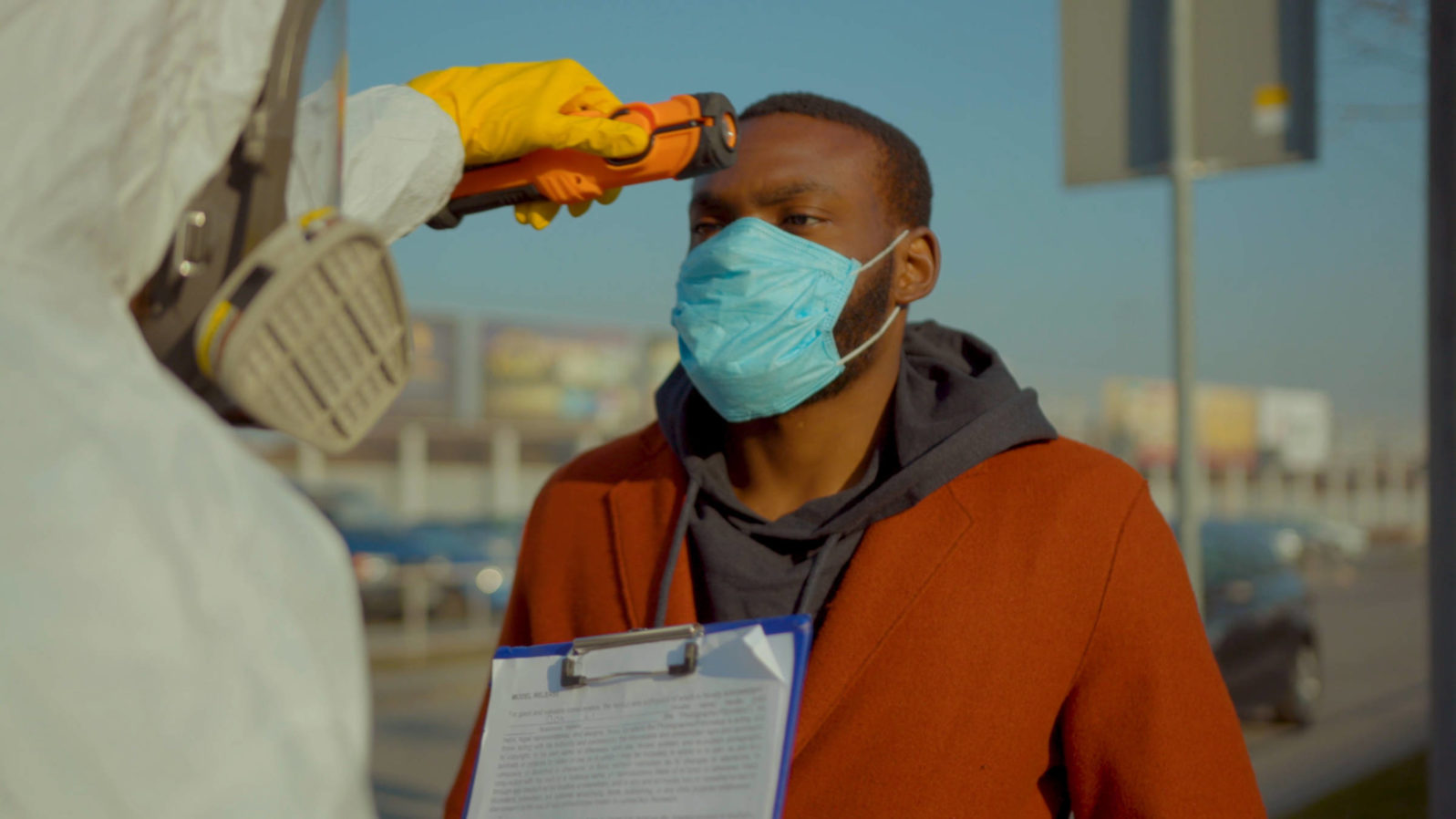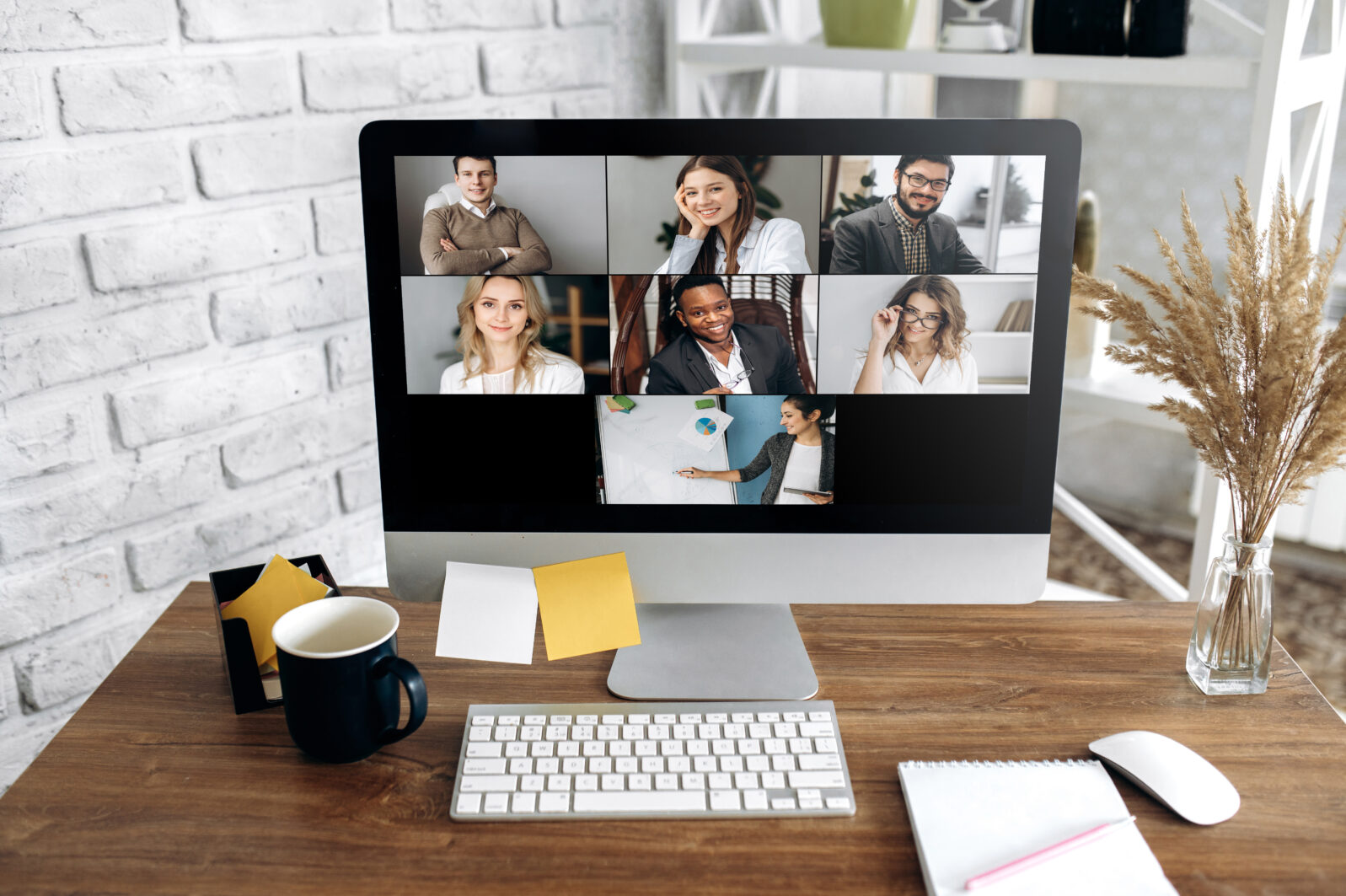COVID-19: Technology Trends That Are Sneaking Up on Us Faster Now
Most of these changes, for better or worse, are probably here to stayWe knew big changes were coming. And that COVID-19 has ramped them up. But when experts expound grand generalities and wave their hands a lot, it can be hard to clearly see what a change means where we live and work. One writing teacher, for example, learned how to massively adapt all of a sudden:
Each spring, I teach Writing about Oneself, a class on first-person reading and writing, to 12 Yale undergraduates chosen from 100 or so…
Every year I fill out the registrar’s Pedagogical Needs Request Form, leaving 14 of the 15 “Technological Needs” boxes unchecked. (No, I don’t need a SMART board. No, I don’t need a digital projector. No, I don’t need a Blu-ray player.) The only box I check is “Other.”
I explain that because the class requires intimacy, my only Pedagogical Need is a round table in the smallest possible room. I add, “The sort of discussions we have don’t work well when the students are spread too far apart.”
Anne Fadiman, “Screen Share: A College Teacher’s Zoom Journal” at Wired
When COVID hit, Fadiman faced a journey of discovery with Zoom.
Yes, automation is coming, but not necessarily the way we hear about

Workplaces are often inefficient—relative to an arbitrary standard—for a simple reason: In a boom economy, if customers, shareholders, and employees don’t complain much, what’s to fix? COVID-19 changed all that.
A software marketing specialist puts it like this: “Many businesses didn’t realize how inefficient they were being until the pandemic hit.”
No, because they didn’t need to. But now they do. If our jobs survived the pandemic, we could still be at risk from corporate plans, wise or unwise, to do without us.
It helps to distinguish between the hype about automation and the reality:
For all the hype around artificial intelligence and machine learning, the quickest and easiest way for companies to automate office work is through simple and decidedly unintelligent software automation… The broader impact of office automation is less clear.
Will Knight, “The Pandemic Is Propelling a New Wave of Automation” at Wired (June 12, 2020)
Indeed. Boring routines are easy to automate. But try automating the process of dealing with the distraught customer who was accidentally overcharged for utilities shortly after his wife’s sudden death. Is there software for that? Whatever happens, we should all heed Jay Richards’s advice in The Human Advantage and focus on developing creative and explicitly human skills.
As more of us do remote or contract (gig) work, the cracks are beginning to show
At one time, remote or contract work was, for most workers, a choice. For many, the advantages outweighed the disadvantages. Thus, we tended to hear about the advantages. But now that many people are forced into remote work or the gig economy, we start to hear more about the chronic problems.
➤ One contract copywriter thought she was just one of the gang at Airbnb. But when the COVID layoffs began, she was cut loose with only 7% of what the 1900 severed employees were given:
Contractors who opted into health insurance coverage from Pro Unlimited saw their plans immediately terminated. And of course, contractors don’t have stock options.
Anna Furman, “Airbnb Quietly Fired Hundreds of Contract Workers. I’m One of Them” at Wired
Contract workers must charge rates that take these differences into account.
➤ Remote contractors and workers do, of course, enjoy advantages like cheaper housing, which often amounts to an equivalent lifestyle for much less money. But in a global economy, we may be in competition with the whole world. When slashing costs is king and radical solutions are sought, “Many who currently dream of working remotely from the beaches of Thailand may find themselves replaced by a Thai contractor.” (City Journal) Richards stresses that the best approach is to accept the need for continuous education throughout life, so as to adapt to changing needs.
➤ For the remote worker, work is “always on.” That doesn’t mean working all the time but it does mean being prepared to work odd or unexpected hours when things heat up in a faraway time zone:
Millennials entered an always-on workforce, with smartphones upping work expectations. Gone are the days of logging off for the night— technology has made workers accessible anywhere, anytime. This has made it so working at convenient hours that balance personal life is the millennial gold standard.
“Alex Sixt”, “4 Trends That Are Shaping the Future of Work” at Entrepreneur
At one time, that sort of thing was for obstetricians and emergency road crews. In a global economy, it’s a new norm for many, with all the stress-related hazards implied. Workers must factor that in when seeking compensation.
➤ Another cost to be factored in is serious computer and internet security. COVID raised the stakes:
There has been a 39% decrease in companies with less than 25% of their staff working remotely, and a whopping 250% increase in companies with more than three-quarters of their full-time employees working from home.
Microsoft Teams is the most popular chat tool, with 50.34% of respondents saying they use it; Skype for Business is No. 2 at 42.07%, and Slack comes in a distant third with only 18.62% of respondents saying they’re using it. /As for video conferencing, Zoom has remained dominant despite its security woes, with 57.24% saying they use it. Skype follows with 41.28%, and Google Hangouts is being used by 29.66% of respondents.
Brandon Vigliarolo, “Report: Working from home is the new normal, but cybersecurity isn’t keeping up” at TechRepublic (June 11, 2020)
No surprise, many of the machines used at home are not especially secure, with predictable results, according to Verizon’s 2020 Data Breach Investigations Report (DBIR):
The lack of diligence around Asset Management is creating new threat surfaces as organizations often don’t know the current health, configurations, or locations of their systems and devices. Asset Management is a black hole in many organizations leading to partial at best efforts to protect every threat surface they have. What’s needed is more insightful data on the health of every device.
Louis Columbus, “Why Securing Endpoints Is The Future Of Cybersecurity” at Forbes:
➤ Some firms have decided to focus on extensive monitoring of the remote workers themselves, instead of hackers:
A rising tide of employer worry appears to be lifting all the ships. InterGuard, a leader in employee monitoring software claims three to four times growth in the company’s customer base since COVID-19’s spread in the U.S. Similarly, Hubstaff and Time Doctor claim interest has tripled. Teramind said 40% percent of its current customers have added more user licenses to their plans. Another firm, aptly named Sneek, said sign-ups surged tenfold at the onset of the pandemic.
Gary Grossman, Edelman, “Work-at-home AI surveillance is a move in the wrong direction” at VentureBeat
Grossman points out that such snooping is now invading the remote worker’s home, not the workplace. In any event, those who seek total control had best not also hope for innovative ideas.
Those who return to work in an office building may find it a very different place

Many companies that took pride in an impressive office space and company culture now wish they could dispense with a lot of that.
➤ Returnees may find scaled-back amenities:
While the workplace isn’t likely to disappear altogether, expect companies to get smarter about how they use space. For example, a company may choose a smaller, more expensive location in a culturally-diverse area to bring that ambiance to its employees.
Dave Clifton, “What Does the Post COVID-19 Workplace Look Like?” at SpaceIQ
What Clifton is not saying here is that “ambiance” may have to stand in for many traditional perks and bonuses, as organizations battle back from Covid.
➤ One vanished perk may be continuing education:
For example, many are reducing benefits related to continuing education and employee training in the face of an uncertain economic future. “It was something that was offered by organizations as a massive perk—getting a higher education, going to business school. In many cases that’s gone by the wayside,” she says. “It’s something organizations simply can’t justify in this state of financial unpredictability.”
Jared Lindzen, “Employers are reconsidering workplace benefits for newly remote workers” at Fast Company
It’s no surprise that, under these circumstances, workers will experience much less of a bond with companies and more with “peers, careers, and communities” as jobs become steadily “more transient, remote, and virtual.” But then workers in many fields may need to adopt the approach of self-employed professionals who access benefits and opportunities through membership in professional and trade organizations.
➤ Whether remote or at the office, the new focus employee is slated to become Gen Z, typically born between 1996 and 2015 (nearly 68 million in the U.S.) They are growing up with the realities to which older workers are now adapting. According to one analyst:
I’m having more hiring and IT managers come to me than ever saying they are getting unusual requests from new hire prospects, including requesting the ability to split time between two companies or only working three days a week, for example.
Dion Hinchcliffe, “2020 Predictions for the Future of Work” at Constellation Research (January 24, 2020)
Gen Z knows that a job is a sometime thing. Options are best kept open.
Much of the news isn’t bad. The flexibility of remote work can lead to more creativity
COVID-19 has hampered science researchers by emptying labs. Those who work with live animals have struggled to keep their test subjects and projects alive. But the lockdowns have also provided a useful demonstration of how things we didn’t expect can be done while working from home.
One scientist was controlling a spacecraft approaching an asteroid 140 million miles from Earth from her laptop while staying at her inlaws:
As she worked in the borrowed-office-turned-command-center, Adam wore black yoga pants and an OSIRIS-REx T-shirt adorned with the mission’s unofficial mascot, a penguin in a dinosaur costume. She sipped from a steaming mug of her favorite chamomile tea and pulled up several windows on her laptop, one showing real-time flight simulator imagery of the spacecraft and the asteroid, and a raw feed of data “bread crumbs,” the craft’s version of text messages, reporting its operations and whereabouts. A handful of NASA employees were at the Lockheed Martin mission support area in Colorado, wearing masks and practicing social distancing; the rest were telecommuting. Adam picked up her phone and dialed into the mission’s dedicated line. “Here we go,” she said.
Chris Wright, “The Remarkable Stuff Scientists Get Done as They Work From Home” at Wired (June 8, 2020)
It’s worth considering, if we had asked a person in Wright’s position a year ago whether she could do all that from her in-laws’ home, she might have been doubtful.

Other scientists, stuck at home, discovered nine new insect species: Lisa Gonzalez of The Natural History Museum of Los Angeles County, deprived of a DNA sequencer, turned to more traditional methods:
Using a microscope she’d taken home from the lab, Gonzalez identified dozens of insect species by looking at features like tiny hairs or the shape of a fly’s wings. She also found some unusual insects that she turned over to her colleague, Brian Brown, the museum’s curator of entomology. Using a larger Leica stereoscope that he hauled in from the office, as well as a smaller compound microscope he found on craigslist, Brown discovered nine species of small flies, all new to science. “It’s always cool to find new things, and it is one of the great joys of this job,” says Brown. “It’s not just finding slightly different new things—we find extravagantly different things all the time.”
Eric Niiler, “Stuck at Home, Scientists Discover 9 New Insect Species” at Wired (June 22, 2020)
A computational epidemiologist notes that the Covid crisis forged collaborations that just wold not have been happening before:
Prior to the pandemic, it was rare that any of us ventured outside the bubble of our own universities and hospitals. Over the decades, this siloed approach to research has shaped the way science gets done—and who gets to do it. The system tends to favor the career advancement of those who belong to a select few institutions over all others, irrespective of the depth of their skills or training. … Academia divides researchers in other ways too. Most of us are used to working mostly, if not exclusively, with others in our fields.
Maimuna S. Majumder, “” at Wired (June 18, 2020)
He thinks that greater collaboration is here to stay.
Just think how quickly the changes happened:
Before pandemic lockdowns hit the U.S., in March, just 2% of the country’s wage and salaried employees worked from home full time. By May, more than two-thirds of white-collar workers in America were logging on from their residences. It’s been an unexpected success for many. In a July study by Lenovo, nearly two-thirds of the more than 20,000 global respondents said they got more done working from home—despite COVID-19 distractions.
Julia Herbst, “GitLab’s radical vision for the future of work” at Fast Company September 10, 2020
But most of these changes, for better or worse, are probably here to stay.
You may also enjoy:
Robot-proofing your career, Peter Thiel’s way. Jay Richards and Larry L. Linenschmidt continue their discussion of what has changed—and what won’t change—when AI disrupts the workplace.
And here are some more pro tips from Jay Richards on AI-proofing your job:
Students, don’t let smart machines disrupt your future Three ways you can avoid life in Mom’s basement and the job pouring coffee.
Creative freedom, not robots, is the future of work. In an information economy, there will be a place where the human person is at the very center
and
Maybe the robot will do you a favor and snatch your job. The historical pattern is that drudgery gets automated, not creativity
